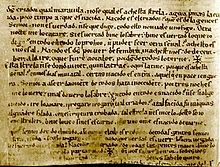
Back Romanistik ALS Filolochía romanica AN دراسات الرومانسية Arabic Раманістыка Byelorussian Filologia romànica Catalan Romanistika Czech Romanistik German Romanistiko Esperanto Filología románica Spanish Romanistika Estonian
This article has multiple issues. Please help improve it or discuss these issues on the talk page. (Learn how and when to remove these template messages)
|

Romance studies or Romance philology (Aragonese: filolochía romanica; Catalan: filologia romànica; French: romanistique; Esperanto: latinida filologio; Italian: filologia romanza; Portuguese: filologia românica; Romanian: romanistică; Spanish: filología románica) is an academic discipline that covers the study of the languages, literatures, and cultures of areas that speak Romance languages. Romance studies departments usually include the study of Spanish, French, Italian, and Portuguese. Additional areas of study include Romanian and Catalan, on one hand, and culture, history, and politics on the other hand.
Becoming fluent in Romance studies requires extensive, specialized training focused on a thorough exploration of the histories of languages and literatures. This education includes detailed study in textual scholarship, paleography, and classical languages, which are core aspects of philological disciplines.[1]
Because most places in Latin America speak a Romance language, Latin America is also studied in Romance studies departments. As a result, non-Romance languages in use in Latin America, such as Quechua and Guarani, are sometimes also taught in Romance studies departments.
Romance studies departments differ from single- or two-language departments in that they attempt to break down the barriers in scholarship among the various languages, through interdisciplinary or comparative work. These departments differ from Romance language departments in that they place a heavier emphasis on connections between language and literature, among others.
- ^ Rodriguez-Velasco, Jesús (Jan–Mar 2010). "Romania Continua, Romania Submersa , and the Field of Romance Studies". Romanic Review. 101 (1/2): 111–114. doi:10.1215/26885220-101.1-2.111. ProQuest 903974078 – via ProQuest.
© MMXXIII Rich X Search. We shall prevail. All rights reserved. Rich X Search